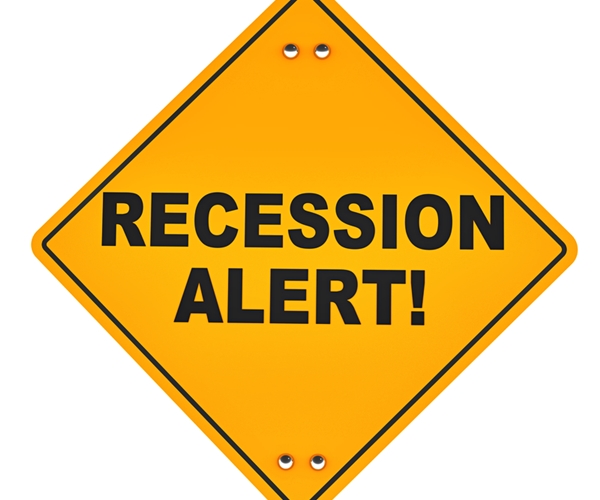As $3T erased from US stocks, wary investors fear virus to spark recession
From Newsmax

With $3 trillion erased from American stocks and the angst starting to morph into panic, investors want to know where it will end. A lot of the answer, and the fate of the bull market, turns on whether the virus outbreak ends up causing a recession.
In America, economic contractions are what cause bear markets — not valuations, political drama or even human tragedy — and very rarely does one come without the other. Indeed, the absence of a recession over the past decade allowed the S&P 500 to rise 2,700 points, a run that defied all others in terms of duration.
Right now, a recession is neither the consensus forecast of economists nor the expectation of most investors queried by Bloomberg. But as global supply chains snarl, markets go dark and sentiment shifts among consumers, stock handicappers are weighing the impact, with worst-case forecasts reaching past a 30% decline.
“A recession may send us into a bear market, a full-on bear market, which would shave a lot more value off equities,” said Chris Gaffney, president of world markets at TIAA. “It would be a major leg down.”
Equity turbulence worsened Thursday as the S&P 500 plunged more than 4% for the worst day in 8 1/2 years, and the Cboe Volatility Index eclipsed its high from the Christmas Eve rout of 2018. The S&P 500 is poised for its worst weekly drop since 2008.
Over the past 11 years, every dip in data, inversion in a yield curve or other shock to markets has elicited warnings of a recession. One never came, and that could of course be true now. At the same time, all but one recession in the last century was accompanied or preceded by a bear market, so if you’re convinced one is coming, now is the time to act.
If the economy contracts, the S&P could fall between 24% and as much as 32% from its recent peak, according to Lori Calvasina at RBC Capital Markets. That range represents the median and average declines around recessions going back to the 1930s and could take the index into the 2,300- to 2,600 range, she wrote in a note this week.
At Goldman Sachs, strategists led by David Kostin see the economy at risk of a recession should the outbreak worsen. According to their data, during 11 recessions since World War II, corporate earnings fell 13% from peak to trough on average, with the drop lasting four quarters. If history is any guide, a looming recession would mean the S&P 500 ends this year at 2,450, a 28% drop from its Feb. 19 high, according to the strategists.
“A more severe pandemic could lead to a more prolonged disruption and a U.S. recession,” Kostin wrote in a note to clients. “If COVID-19 spreads rapidly, supply chain delays could persist, U.S. consumer demand could plummet, and firms could lay off workers in an effort to maintain margins.”
There’s a near 30% chance the U.S. economy falls into recession within 12 months, according to the latest reading from a Bloomberg Economics model that incorporates data spanning economic conditions, financial markets and gauges of underlying stress. At the same time, the outbreak is too new to have shown up in much data. Investors are flying blind, and that’s adding to volatility.
The global economy will suffer in the first quarter due to lost Chinese output, wrote Chris Low, chief economist at FHN Financial, in a note this week, but economic damage may spread beyond China and the impact last longer. “Possible outcomes, therefore, range from mild global recession and severe U.S. slowdown to severe global recession with a moderate U.S. recession,” he said.
To be sure, avoiding a contraction results in much more palatable outcomes. According to Keith Lerner, SunTrust’s chief market strategist, the S&P 500 should find support at a 17-times price-earnings multiple, barring a substantial rise in U.S. recession risk. Lerner calculates that if S&P 500 firms’ future earnings are cut by 5% in the year ahead, and a multiple of 17 holds, that would put a floor under the market around 2,900 — 2.6% from current levels.
“We are still viewing the current action within the context of a bull market,” Lerner wrote to clients. “Even though this pullback has been fierce, it’s not necessarily unusual following the sharp gains we had seen or in the context of this bull market.”
Sandip Bhagat, Whittier Trust’s chief investment officer, sees a floor around 3,000 for the S&P even in the event of a total wipe-out of 2020 earnings growth.
“We’re closer to the bottom than not, and so I would not panic,” Bhagat said by phone. “The market has gone through several previous episodes of pandemics, and this will not have a lasting effect. It will create short-term disruption and therefore damage for both the economy and for earnings, but nothing that will hold the underlying bull market back.”
© Copyright 2020 Bloomberg News. All rights reserved.
For more on this story go to: https://www.newsmax.com/finance/streettalk/traders-rout-nasty-end/2020/02/27/id/956095/?ns_mail_uid=6952f1f9-507d-4a20-8cc0-0a1db158d76e&ns_mail_job=DM92333_02282020&s=acs&dkt_nbr=010504pt3at7





